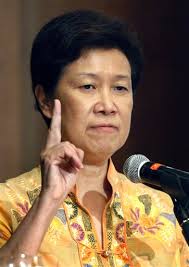Temasek Loses the Plot
 Last week I pointed out * that it made no sense for Temasek to pay a huge premium for Olam’s equity when Olam’s short-term debt refinancing was likely to be problematical, to say the least. Lenders would likely have become increasingly nervous about extending more credit and rolling over existing facilities without a convincing strategy to achieve positive free cash flow and worries over the transparency of Olam’s accounts,
Last week I pointed out * that it made no sense for Temasek to pay a huge premium for Olam’s equity when Olam’s short-term debt refinancing was likely to be problematical, to say the least. Lenders would likely have become increasingly nervous about extending more credit and rolling over existing facilities without a convincing strategy to achieve positive free cash flow and worries over the transparency of Olam’s accounts,
If Temasek saw long-term value in Olam, the moment at which lenders would no longer extend credit would have been the ideal moment to step in. They could then have offered to buy the debt at a substantial discount to face value, taking control of the company in that way. Instead of waiting for Olam’s credit problems to become unmanageable and swooping in to get our citizens a bargain, Temasek has in effect bailed out the foreign lenders. By doing so they are providing them with the reassurance of state ownership, even if not a direct guarantee.
For those of you who are sentimental about our sovereign wealth fund stepping in to save a Singaporean company from going under and believe it is worth the cost, I should point out that all of Olam’s production and most of its employment is overseas in places like Nigeria. Originally headquartered in London, it only moved to Singapore in 1995 and the CEO himself is a relatively new citizen.
On Monday Moodys, the US credit-rating agency called Temasek’s inexplicably generous offer for Olam “credit negative” **
This is what Moodys had to say about the Olam acquisition:
“Bringing a new company under the Singapore umbrella negatively pressures portfolio liquidity. Furthermore, Olam’s dividend yield in 2013 of 2% is well below Temasek’s overall dividend income yield of about 3% in the year to March 2013.
In terms of currency, 65% of Temasek’s investments are in Singapore dollars. The high concentration of investment in Singapore-listed companies and the large size of each shareholding reduce portfolio liquidity. This feature is markedly different from the typical, more broadly spread sovereign wealth funds that can adjust their holdings rapidly without moving markets or requiring placements or trade buyers to effect disposals.
It is highly unusual for investment companies to seek full control of a business.”
If you want to know how a Sovereign Wealth Fund should be run for the benefit of its citizens,then look at Norway. The Norwegian Sovereign Wealth Fund takes stakes of 1% or less in the equity of most of the companies it invests in and has a maximum stake size of 5%. Some might object that a significantly concentrated portfolio leads to significantly higher returns. However the concomitant of higher concentration is significantly higher risk.
The Moodys report also highlighted the relatively weak state of Olam’s finances:
“Olam’s credit profile is relatively weak with gross debt of SGD9.1 billion and a reported last-12-months EBITDA of SGD1.2 billion as of 31 December 2013. Now with Temasek firmly in the picture, Olam will benefit from the financing halo effect, although Temasek does not guarantee the debts of its operating subsidiaries.”
Singaporeans should be very worried by this acquisition. It casts doubt on the investment competence of Temasek’s management. However if this acquisition is worrying, an investment company that acts in complete contradiction to its stated strategy is even more worrying. In a recent Reuters article about Temasek and Ho Ching’s new strategy, “Temasek’s pivot to private investment heralds billion-dollar listed asset sales, Temasek was described as cutting back on big stakes in publicly listed firms and putting more emphasis on private equity.
To quote from the article:
Under the guiding hand of chief executive Ho Ching, the wife of Singapore’s prime minister, the $170 billion state investor is morphing into a leaner form. The firm’s returns have often lagged its own internal metric in recent years due to its focus on big stocks.
Which goes on to say:
“Now they’re allocating capital in smaller chunks to these publicly listed firms, so that they are no longer a significant stakeholder in the company,” said Melvyn Teo, a professor of finance at Singapore Management University who has observed Temasek’s strategy closely over the years.
So lets just recap here.
- Temasek invests the citizens’ money for the citizens’ benefit
- Temasek is morphing into a leaner form
- Temasek is no longer going to take significant stakeholder positions
- Temasek aims to raise its returns relative to an internal metric
- Temasek is shifting its focus towards stakes in smaller companies and private equity investments
I fail to understand how Temasek’s takeover of Olam fulfills any of these aims.
So is Temasek fit for purpose and is our money safe? I am not convinced.This complete contradiction provides yet more evidence that the management of Temasek do not know what they are doing. Far from investing for the long-term (which again is almost certainly being used as a way of justifying ex-post any number of poor short-term investment decisions), in making the offer for Olam in such haste and overpaying they appear to be reacting to short-term pressures (possible bankruptcy?)
It has been suggested that Olam was on the verge of collapse and Temasek were trying to shore up the banking system. But that hardly makes sense as Olam’s debts of $9 billion are not that significant in relation to total deposits in our banking system.
It may be that Temasek are deliberately paying far too much for Olam because they want to mark their existing shareholding to the offer price and book the resultant goodwill on their balance sheet as profit. It is ironic that this is exactly the tactic that Carson Block accused Olam of using to artificially boost their profit. By keeping Olam listed with negligible free float they may be able to claim further mark to market profits by pushing up the share price. That is why we had Nomura coming out with a recommendation yesterday ( that investors hold on to their shares because they are likely to rise further.)
It is no coincidence that the Lead Nonexecutive Director of Olam happens to be the Chairman of Nomura Singapore. The Securities Industry Council (SIC) need to look at whether parties allied to Temasek but outside the “Concert Parties” (as defined in the offer document) were involved in pushing up the share price. Given the conflicts of interest that the members of the SIC have, an independent investigation is unlikely to happen.
Another worrying sign is the fact that both Josephine Teo and Inderjit Singh spoke in Parliament (“Govt spending needs won’t drive GIC, Temasek investments”) in an obviously choreographed performance to deliver the message that Temasek and GIC must not be put under pressure to deliver short-term returns to meet spending demands. Josephine Teo said that “GIC and Temasek “must continue to invest with the aim of achieving good, risk-adjusted returns over the long term”. As Keynes said about returns over the long-term, “In the long run we are all dead”.
If the returns are as the managers of Temasek and GIC claim they are, then why does the PAP give the impression that its idea of the long term will be well past the lifespan of any Singaporean alive today or even their grandchildren? Why are Singaporeans willing to put up with this nonsense. We need proper accountability and transparency now and this can only be achieved by listing Temasek and GIC and distributing shares to Singaporeans?
Temasek claims a track record of 17% p.a. annualised. I hope I have shown my readers over the last three years that the track record quoted was only achieved because when Temasek was set up the government transferred its shareholdings to Temasek for close to zero consideration. When these companies (SIA and SingTel are two prominent examples) were later floated, Temasek claimed the revaluation gain as part of its returns. This blatant padding of Temasek’s real track record would not have passed muster with an independent regulator if Temasek were a private sector investment company marketing funds to the public.
This practice still continues. A case in point is the injection of Changi Airport Group into Temasek in 2009 at a book value of around $3 billion or less when the real value of the airport is probably upwards of $16 billion or so (see my article “Has Temasek Found A Cure for Balding?”).
As I first said in an interview*** in 2010 (which was quoted all over the world), if Temasek were a private company, heads would have rolled by now. That was in 2010 but the situation has not improved. The irrational investment decisions, the contradictions of policies announced just days before and inability to stick to an investment strategy, coupled with the lack of transparency and use of dubious accounting to artificially boost returns would all raise red flags with investors. I can tell you that if I were a private investor I would not be putting my own money into this company.
*Questions for the Prime Minister’s Wife on Temasek’s Olam Acquisition
**Temasek Unit’s Offer for Olam Is Credit Negative, Moody’s Says
***http://in.reuters.com/article/2010/03/12/idINIndia-46873320100312




this is a “face saving” exercise to save PM wife from another bad publicity. HC always has a history of making bad investment decisions and this is no exception. Again the tax payer is again called to save the sorry arse of that woman, which in any normal investment company, would have gotten the sack and never to show her face in the financial community again. The benefits of sharing the same bed with our PM s really very good..
LikeLike